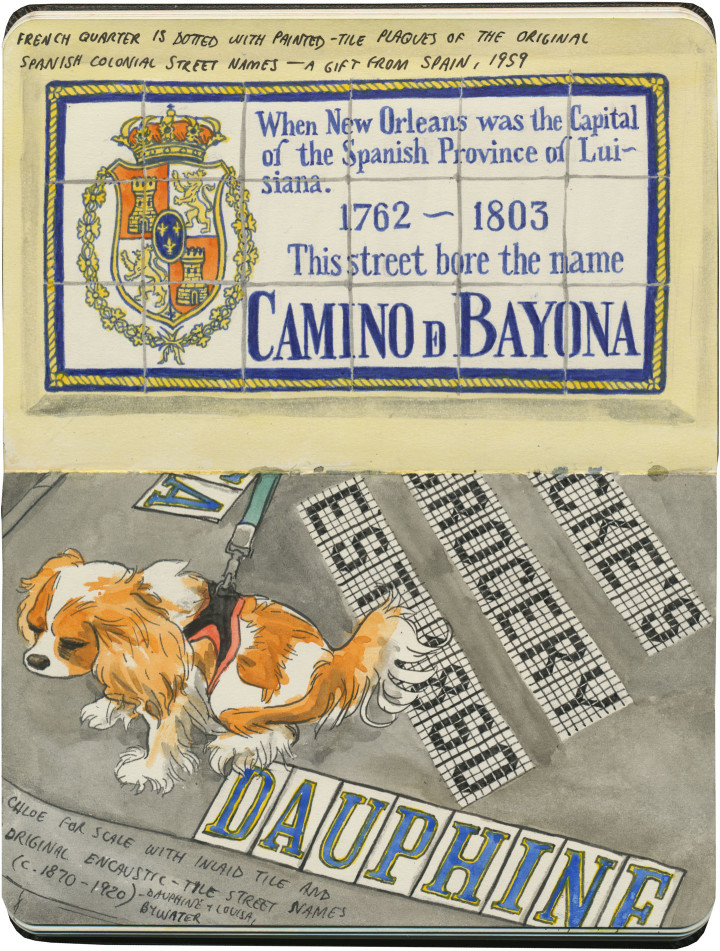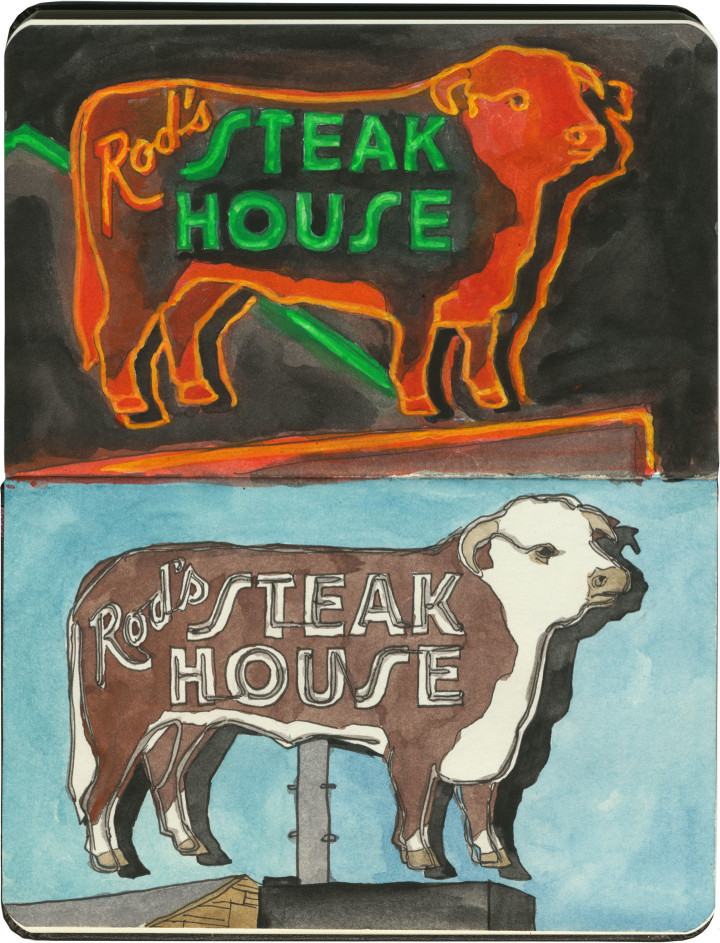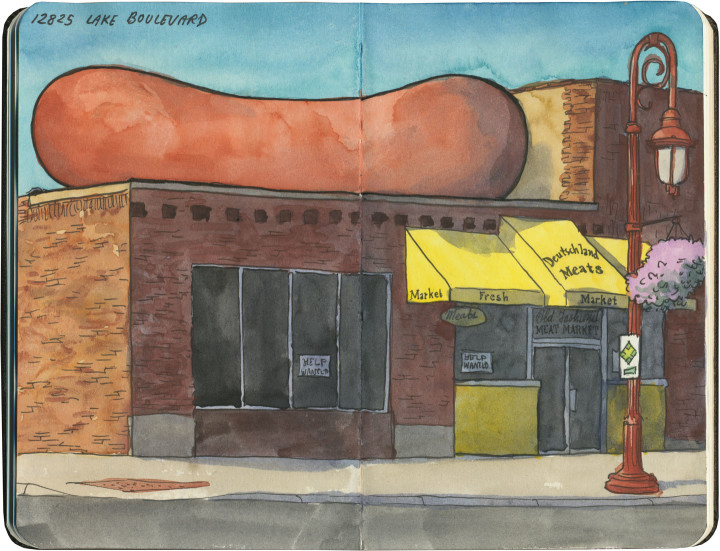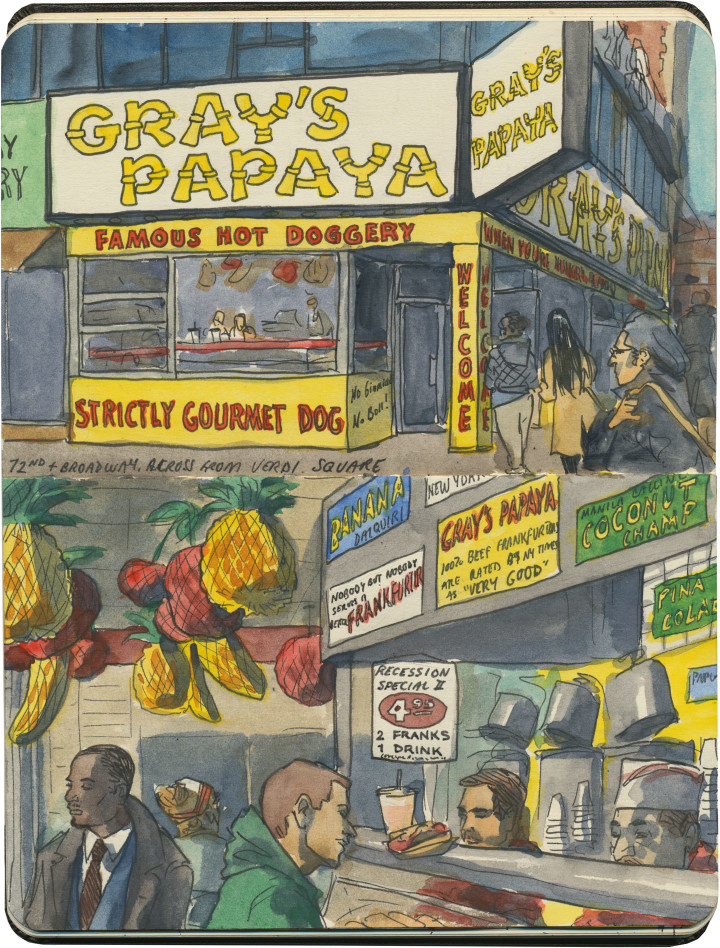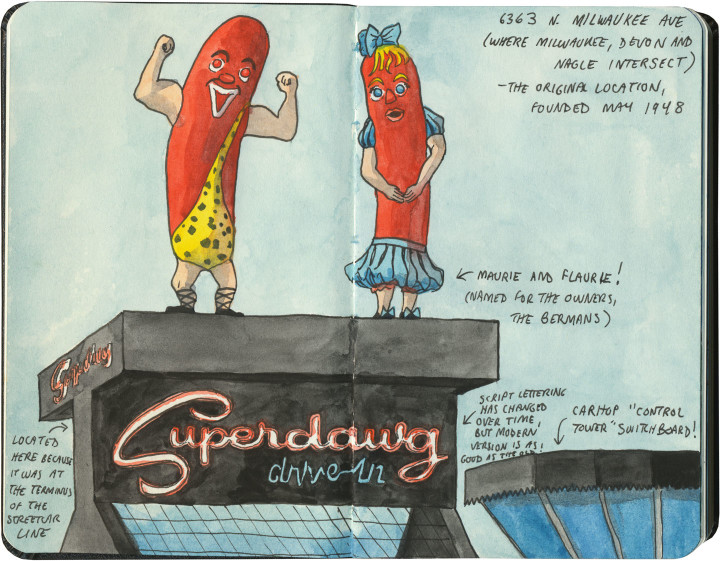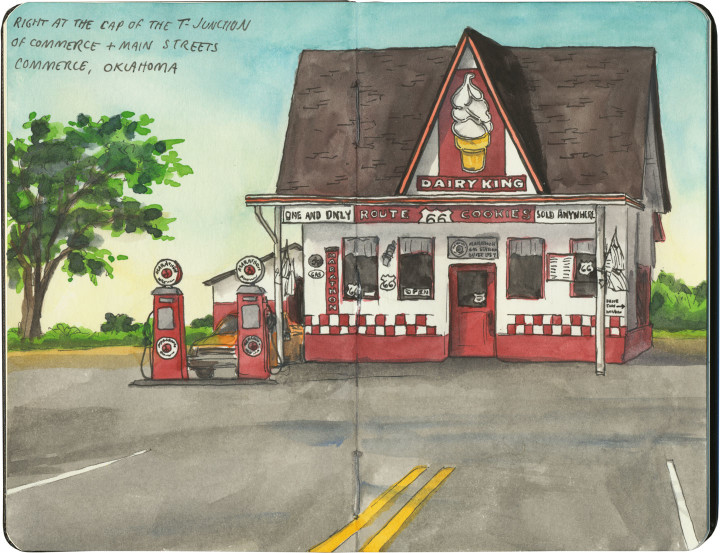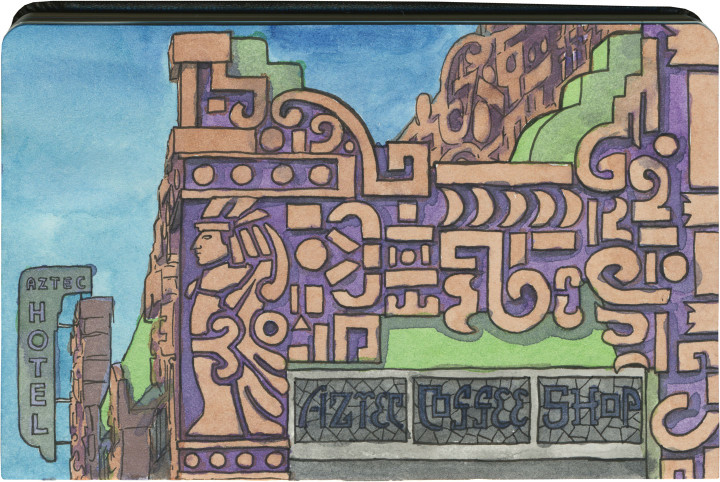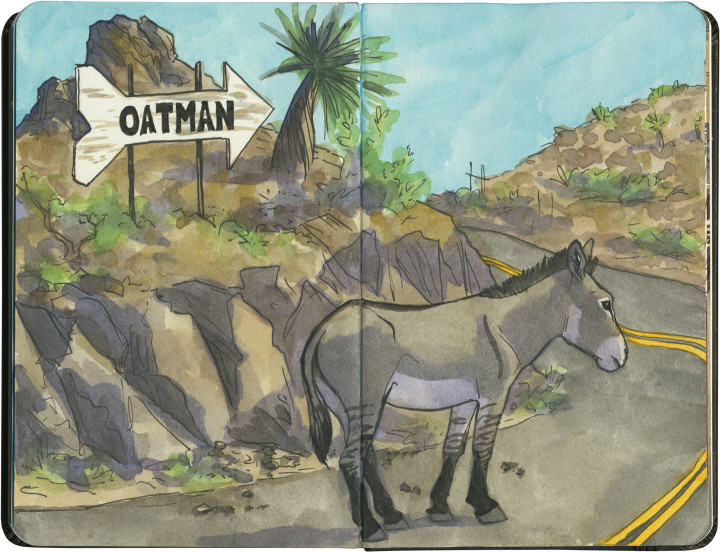
This post is part of an ongoing series called 66 Fridays, which explores the wonders of old Route 66. Click on the preceding “66 Fridays” link to view all posts in the series, or visit the initial overview post here.
If you want to see a good concentration of neon signage you can visit the Miracle Mile in California, or you might try 11th Street in Tulsa. Or you just can head straight for the Googie Mecca. I gave you just a taste of it in last week’s installment, but I figured it was worth elaborating a bit.

There are actually two Route Sixty-Sixes in Albuquerque, as the Mother Road’s path changed from a north-south route to an east-west one. (That’s a story in and of itself, which I’ll tell in a future post.) And both alignments of the old highway are absolutely crammed with vintage neon.

Central Avenue is the more recent incarnation of 66, cutting roughly a fifteen-mile neon swath through the heart of the city.

Googie beacons point the way from the eastern boundary…
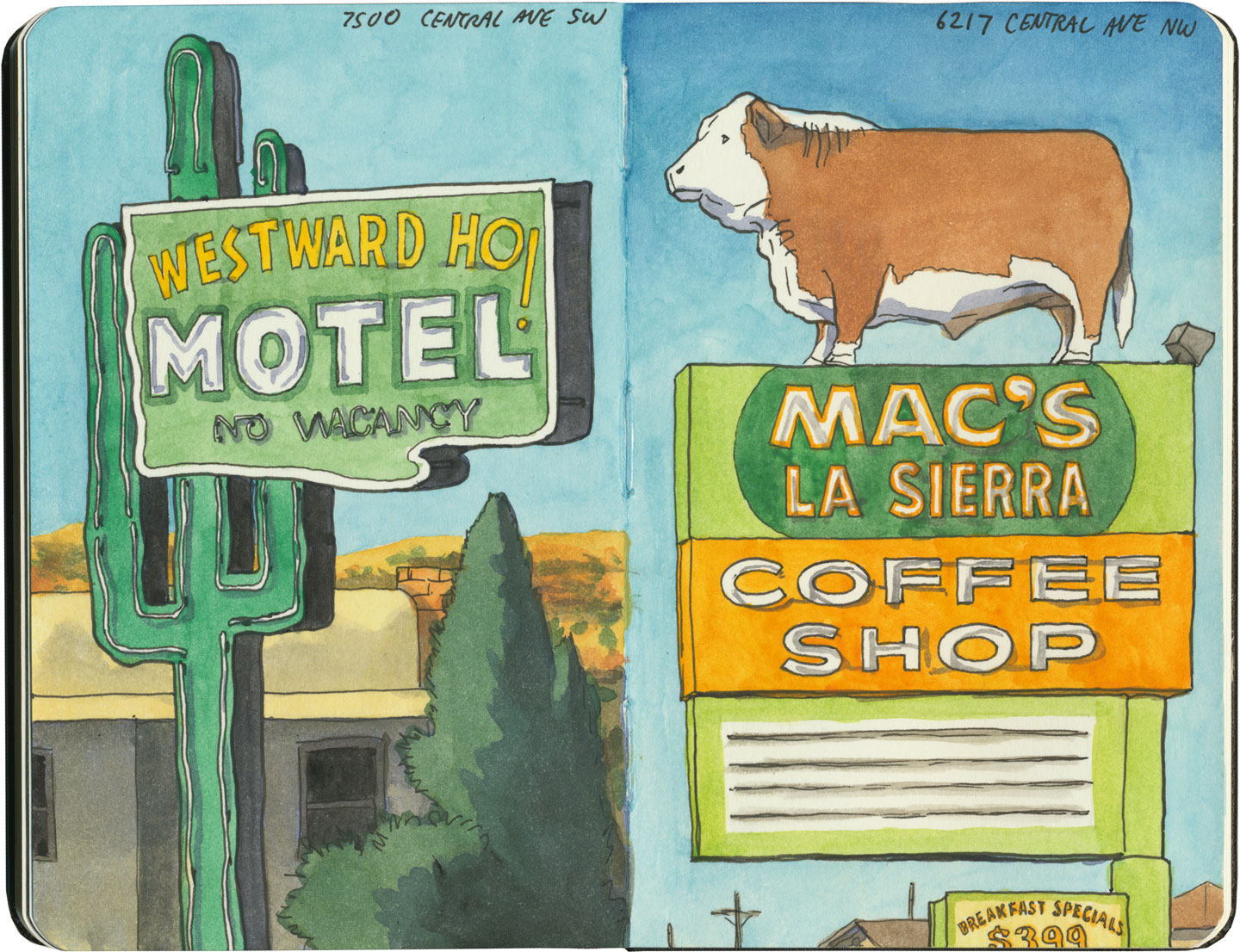
…to the far western edge of town. At the peak of Route 66’s heyday in the mid-1950s, there were apparently 98 motels along Central Avenue—yet even in 2015 I lost count of how many old signs we passed.
The Mother Road signage isn’t limited to lodging, either.

Many of the signs were in fine fettle, either newly restored or lovingly maintained. Still, we passed business after business that had very recently been shuttered for good—a reminder that the Route 66 Mom-n-Pop is an endangered species.

About fifteen or twenty years ago, stretches of Central Avenue and its motel relics were plagued with the hallmarks of hard times: drugs, violent crime, human trafficking. Yet in recent years the remaining business owners have made an effort to clean up the thoroughfare and their properties, particularly from Nob Hill inward.

The contemporary result is example after gleaming example of gorgeous storefronts and restored midcentury typography.

I just couldn’t believe our luck—we’d hit the Googie jackpot.

There wasn’t time to finish even a single sketch that day—it was all I could do to keep up by jotting down messy, temporary pencil scrawls. The “To Finish in the Studio Later” debt I incurred that day was enormous, and I’m still paying it off. I haven’t even showed you everything here—just my favorites (oh, that canary Cleaners storefront! A sketch will never do that beautiful, pristine façade the justice it deserves).

So, yeah. I loved Albuquerque already, for other reasons, but Route 66’s mark on the city pushed it into the stratosphere for me. The only downside is that now the bar has been raised a goodly height—and at least where old neon is concerned, it’ll be hard to find anywhere else that can hold a candle to the Q.
